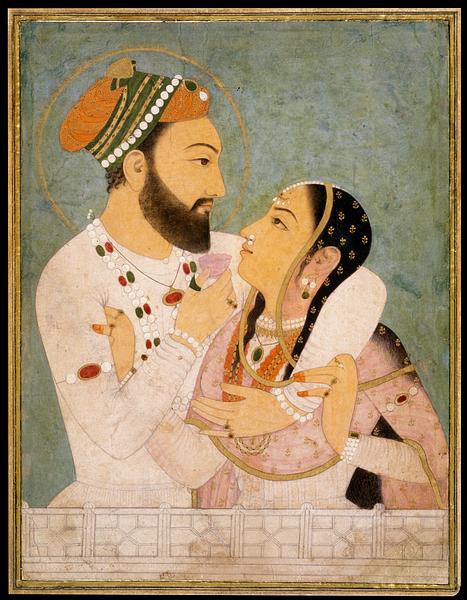Miniature pasted on cardboard. ‘A Prince with his Beloved’
India, Amber or Jaipur; 1st half of 18th century
Leaf: 24.5 × 18.9 cm
In 1727, Maharaja Jay Singh II of Amber founded the city of Jaipur and from one of these two cities comes this sensitive and humanly genuine portrait of a prince and his beloved. The style was clearly influenced by Mughal art, and it has been proposed that the monumental painting is a posthumous portrait of Shah Jahan’s oldest son and successor, Dara Shukoh, together with his wife, Nadira Banu Begum.
During Shah Jahan’s illness in 1657, there was a power struggle between the mild Dara Shukoh and his younger brother Aurangzeb, who won and in 1659 had his older brother beheaded. At the same time, Aurangzeb imprisoned Shah Jahan in Agra, where he was able to gaze upon the Taj Mahal, his wife’s tomb, for the remainder of his days.
Inv. no. 34/1981
Published in:
Kjeld von Folsach: Islamic art. The David Collection, Copenhagen 1990, cat.no. 54;
Jessica Hallett, Conceicao Amaral (eds.): Cultures of the Indian Ocean, Museu Nacional de Arte Antiga, Lissabon 1998, cat.no. 99, pp. 222 and 298-299;
Knud W. Jensen (ed.): De glade givere: museernes bedste billeder, Louisiana, Humlebæk 1999, p. 14;
Kjeld von Folsach: Art from the World of Islam in The David Collection, Copenhagen 2001, cat.no. 77;
Kjeld von Folsach: For the Privileged Few: Islamic Miniature Painting from The David Collection, Louisiana, Humlebæk 2007, cat.no. 116;
Kjeld von Folsach, Joachim Meyer: The Human Figure in Islamic Art – Holy Men, Princes, and Commoners, The David Collection, Copenhagen 2017, cat.no. 52;
_sort.jpg?locale=en)